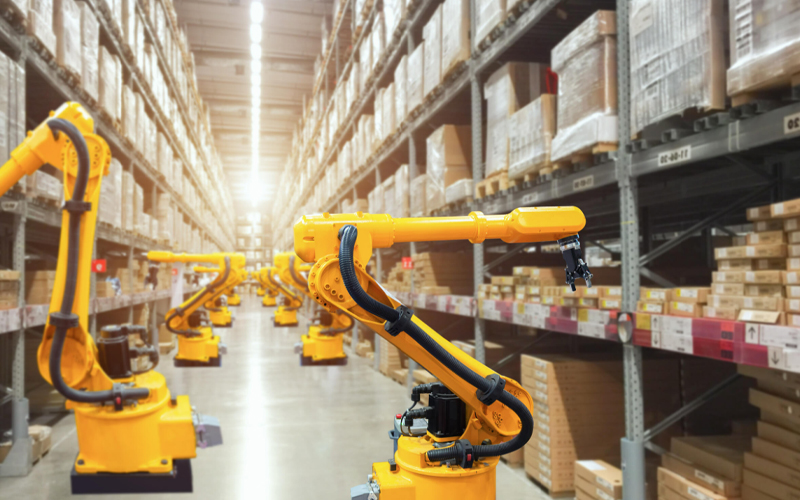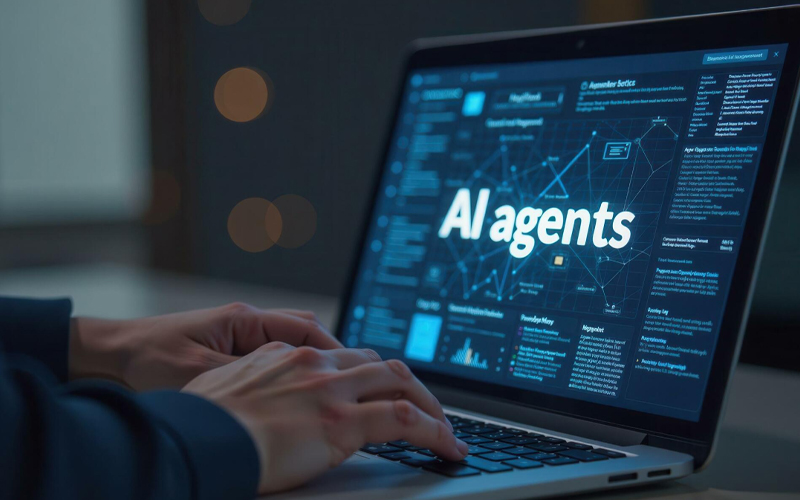Artificial Intelligence (AI) has dominated the past decade, reshaping industries like healthcare, financial services, and automotive. AI’s capabilities of facilitating data analysis, guiding smart decisions, and automating tasks with precision has positioned it as a pivotal element in the technology landscape. Its impact goes beyond mere efficiency and is reshaping entire industries and pushing the boundaries of what's possible.
A recent evolution in AI development is a new cutting-edge technology, known as “Hypermodal AI”. At its core, Hypermodal AI is an enhanced model that combines several types of AI models to function collaboratively, delivering enhanced output to any single model on its own. Hypermodal AI is an innovative approach to artificial intelligence that integrates and analyzes data from multiple sensory modalities, offering a more comprehensive and nuanced understanding of complex situations. Traditional AI often relies on data from a single source, like text or numbers. Hypermodal AI, on the other hand, can process text, images, audio, video, sensor data, and information from diverse sources, creating a richer and more "human-like" understanding of the world. This multi-channel approach unlocks a deeper understanding of complex situations, empowering businesses to navigate complicated challenges with extraordinary ability.
Foundation: Core Principles of Hypermodal AI
Hypermodal AI's strength lies in its unique blend of three cutting-edge AI paradigms: Predictive, causal, and generative. This powerful fusion not only transcends traditional AI capabilities but also establishes Hypermodal AI as a distinct force within the AI landscape.
Predictive AI utilizes historical data types like workload, events, trends, and seasonal user behavior to analyze patterns. By analyzing these patterns, we can draw a picture of the historical behavior trends that exists in the business.
Causal AI delves deep into the “why” behind business trends. It untangles the complex web of cause-and-effect driving customer behavior, market trends, and operational disruptions, delivering actionable insights that drive strategic decisions.
Generative AI is capable of crafting entirely new content and generative models, as well as excels at imitating real-world data patterns. It translates natural language to generate content, create dashboards, provide suggested code automation workflows. This power unlocks possibilities for content creation.
The blend of predictive, causal, and generative AI into Hypermodal AI is a catalyst for innovation—it signifies the evolution in the AI landscape. By combining these paradigms, we gain not only the ability to anticipate future trends but also to understand their root causes and create new solutions that could help drive business outcomes.
While Hypermodal AI is still emerging, it has the potential to revolutionize various aspects of banking processes. Here are some of its use cases:
- Default management: By merging the power of prediction and understanding model, Hypermodal AI makes it systematic for banks to handle default management. Predictive AI can methodically review the historical payment patterns, spending patterns, use of specific features within a financial product to predict the likelihood of default. This, combined with Causal AI, can identify the hidden cause contributing to potential default like change in income, employment, etc., Through such detailed assessment, banks will be better equipped to prevent defaults and take proactive measures.
- Personalized debt restructuring: Hypermodal AI makes it easier for financial institutions to analyze customer transaction data and their transactional history to forecast an effective debt restructuring option. This factors in various elements like their income, expenses, and repayment capacity. Generative AI can create personalized plans with flexible terms and conditions based on the predicted outcomes. This allows for a holistic and customer-centric approach in debt recovery.
- Anomaly detection: Unlike the traditional AI which often focuses on single capabilities like prediction and classification, Hypermodal AI combines three distinct capabilities through which banks can effectively study transactions. Hypermodal can forecast with greater accuracy even with unstructured and multimodal data, such as text, images, sensor data, social media analytics, facial recognition, voice patterns, and device behavior. It goes beyond rule-based systems which often miss the evolving threats and further delves deeper to uncover the reason causing the anomaly. It identifies hidden relationship, revealing the root causes of fraud and other suspicious patterns. Generative AI can create synthetic transactions mimicking fraudulent activities which in turn will help in refining the detection model which could identify even a sophisticated fraud attempt.
- Design innovative products & services: Financial institutions will be able to create superior financial products and services by leveraging the unique blend of AI models integrated in Hypermodal AI to understand customer needs. With predictive AI models, banks can analyze the historical data related to customer behaviors, demographics, and financial transaction patterns to predict the future needs and preferences. For instance, customers’ interest in a specific investment product based on the past behavior (types of investment held, trading frequency, risk tolerance, etc.) and market trends. Causal AI can delve deeper and understand the reason behind customers; choices and uncover hidden relationship among various data points, explaining the underlying factors driving financial decision. For instance, it might identify that a customer’s recent travel expenses could point toward the need for travel insurance. Generative AI can create bank statements with hypothetical scenario based on the product choice, helping customer to understand the potential benefit in each option.
- Multi-format data processing: Banks receives huge volumes of documents in various formats, which leads to a tedious amount of work in processing. Hypermodal AI makes is easier for banks to process diverse data formats, from PDFs and text documents to images and audio recordings, seamlessly extracting information and automating tasks like invoice processing, data entry, and reconciliation. This reduces manual workload, minimizes errors, and improves efficiency.
In summary, Hypermodal AI represents a significant advancement in AI technology, offering broader capabilities, deeper insights, and the potential to solve more complex problems. It can empower the finance industry to tackle the challenges faced in the current dynamic environment.
Although there are exciting possibilities, real-world implementation requires further development. By overcoming the challenges and harnessing its power responsibly, banks can create a more personalized, efficient, and secure future for their customers.







